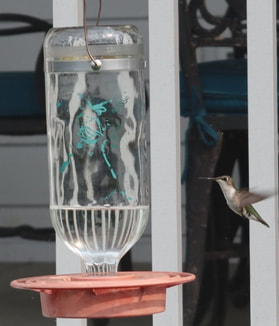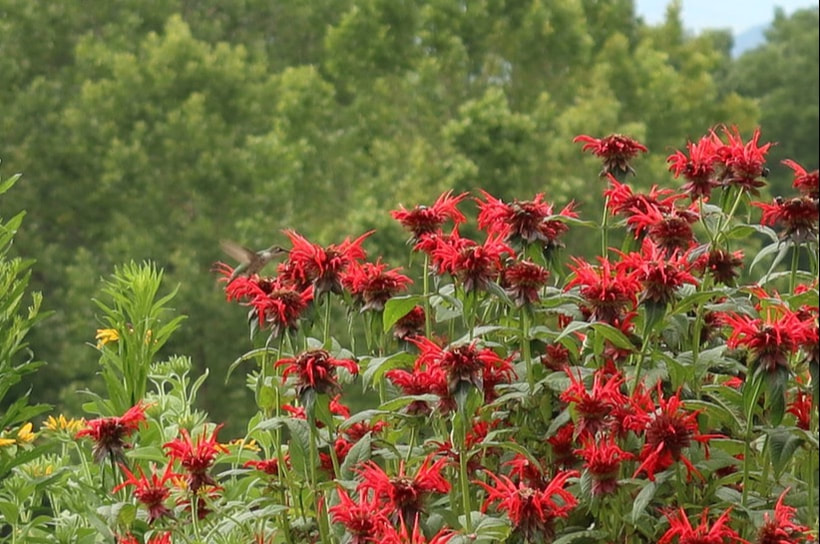 Hummer approaching sugar water feeder; Credit: Charlene Uhl Hummer approaching sugar water feeder; Credit: Charlene Uhl Sycamore Grove Farm, Madison County Ruby-throated hummingbirds (Archilochus colubris) come to our sugar water feeders every year in Madison County. This year, we started to plant native flowers in one of our raised beds, including one of their favorites: bee balm (Monarda didyma). The sugar water feeders are within ten feet of these flowers. Our hummers regularly fly back and forth between the feeders and the flowers, almost like their “all you can eat” food bar. Hummers have outstanding spatial memory and can remember feeder locations years later. They are able to keep track of bloom peaks and remember which flowers they have visited. Scientists attribute these skills to the large portion of a hummingbird’s brain that is occupied by the hippocampus, an area dedicated to learning and spatial memory. Worldwide, there are over 360 species of hummingbirds and they are found only in the Americas. They can be found in a wide variety of habitats from desert scrubland to above tree line at 10,000 feet in the Andes. Unfortunately like many birds, habitat loss is threatening many species. The U.S has only 15 species; the Ruby-throated is the only hummer found east of the Great Plains. Ecuador has the largest number of species of hummers of any country: 130. The average life span of a hummingbird ranges from 3-5 years. The oldest know Ruby-throated “hummer” was a banded female that was captured (then re-released) in West Virginia in 2014 – it was least nine years and two months old. Here are some remarkable statistics on these tiny birds, whose amazing acrobatic flying skills are a big part of their attraction:
Here are some birding tips on how to attract hummers to your yard:
For more information and a list of top native hummingbird plants check out this website from the American Bird Conservancy. Happy birding! Charlene
0 Comments
Your comment will be posted after it is approved.
Leave a Reply. |
Have a blog or blog idea?
Let us know (click) Other Blogs
VA Native Plant Society - click Brenda Clement Jones - click John Muir Laws' Blog - click Megan's Nature Nook - click Categories
All
Archives
September 2023
Blog Administrator:
Kathleen A. VMN since 2018 |
